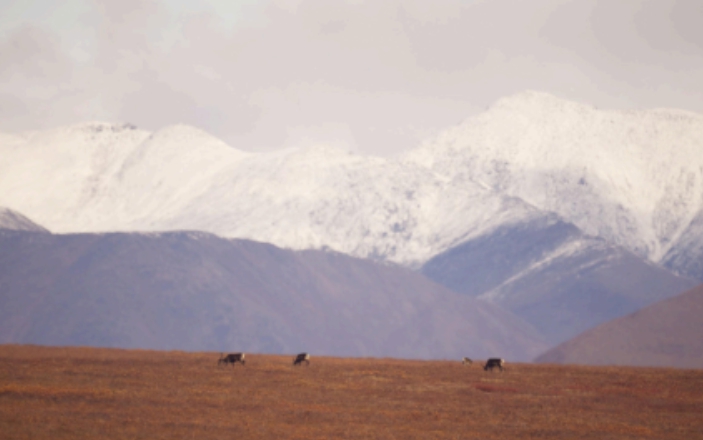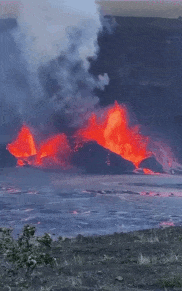
What is Mount Spurr And Where Is It Located?

Mount Spurr is an 11,070-foot-tall active volcano covered in layers of snow and ice, located about 80 miles northwest of Anchorage. Mount Spurr is the tallest volcano in the Aleutian Arc, where several volcanic islands stretch from Southcentral Alaska to the Kamchatka Peninsula in the Russian Far East along the Aleutian Chain. It is located in a very remote area, with the Village of Tyonek being the closest community to the volcano. The Village of Tyonek is located on the west side of Cook Inlet, about 40 miles away by plane. It is one of the 53 volcanoes in Alaska that have been active over the past 250 years.
How Do Scientists Predict Mount Spurr’s Eruption?
There are many factors that contribute to the idea that the volcano will erupt, according to scientists. Near Mount Spurr, the volcano’s surface has enlarged, recent earthquakes were present, melting snow, and inordinate emissions of volcanic gases. Additionally, during overflights across Mount Spurr, there was an outstanding elevation of gas emissions.
When Did Mount Spurr Last Erupt?
The summit vent of Mount Spurr last erupted over 5,000 years ago, which has been the last known eruption. Simultaneously, the Crater Peak vent erupted once in 1953 and three times in 1992, which was the latest eruption. The Crater Peak vent is roughly located 2 miles south of the summit. On August 8th, 1992, the second eruption of the three eruptions in 1992, winds and ashes were blowing into Anchorage.
In the 1953 eruption, the strong single blast lasted for an hour, creating a plume that was 30,000 feet high in the sky. Known now as Ted Stevens Anchorage International Airport, it was shut down for two days after a quarter-inch of ash fell on Anchorage. On the other hand, in 1992, the volcano’s eruption created three explosions that took place in June, August, and September. The plume from the first explosion reached 47,500 feet, and the second explosion closed the Anchorage airport for 20 hours.
The ashfall was extremely severe, so the citizens were told to wear masks and were directed not to go outside. Over the past years, there were present earthquakes and other contributing factors to an eruption, but it did not happen between 2004 and 2006. Last October, the observatory recorded Mount Spurr’s alert status from green to yellow when seismic activity was noticeable in the satellite data. However, it is possible that Mount Spurr will not erupt, such as the occurrence in 2004 through 2006.
Will the Eruption Happen Anytime Soon?
The eruption is expected to occur in a few weeks or months. In the past month, February, scientists declared there was an equal chance the volcano would erupt or not. As time passed, the scientists then said the volcano would more likely erupt than not on March 12th. Although the scientists are not a hundred percent sure, there will be a higher chance Mount Spurr will erupt.

How Would The Eruption Look Like?
Though scientists do not have any specific explanations of how the eruption would look, they predict ashes of smoke could move into Anchorage. Depending on the time, the weather, and the size, it will differentiate the duration of the eruption.
What Is Its Effect On Southcentral Alaska And Potentially The Whole State?
Ashfall would be the most concerning effect from the volcano, and scientists do not know how thick and the quantity of ashes there will be. The ashes produced from the volcanic eruption cause damage to the eyes, the lungs, and can damage vehicles. There would be immense amounts of ashes, like a dust storm, possibly hiding the sun. After the eruption, it would cause volcanic mudflows and pyroclastic flows that are hot, high-speed flows of ash, volcanic rocks, and gas. According to the observatory, areas surrounding the volcano will immediately be affected by the pyroclastic flows. The volcanic mudflows indicate low risk because there are no communities in the area. Both cargo and passenger flights over Alaska will be affected as well; the ashes can malfunction the engines, and the smoke will be difficult for the pilots to see.
How Can We Prepare And How Can We Be Safe?
There will be massive amounts of ash; therefore, it is best to stay indoors. If that is not possible, it is most beneficial to wear a mask or wear any eyeglasses. Ashfall should be cleaned from any clothing as it could still harm the lungs or the eyes. Ash is bad for car engines, so it is best not to drive after the eruption. Continuously, when ashfall is on the windows, pouring washer fluid over the window is more effective than using the windshield wipers to wipe off the ash. The best way to be safe during and after the eruption is staying out of the ash as much as possible.
Mount Spurr is still at unrest, showing a variety of features such as earthquakes and high-level gas emissions, indicating its eruption in a few months or even a few weeks. Although scientists do not know the exact information of when and how long the eruption would last, it is best for citizens to be cautioned and to be prepared for the unanticipated eruption.
<Jacob Lee Student Reporter>Village Christian School jacobbest2011@gmail.com






